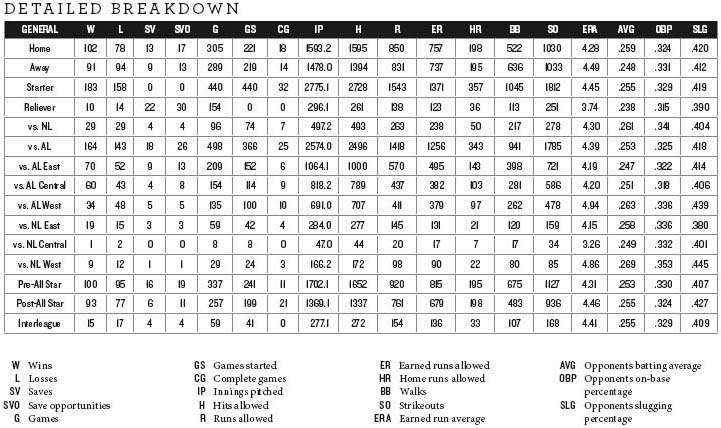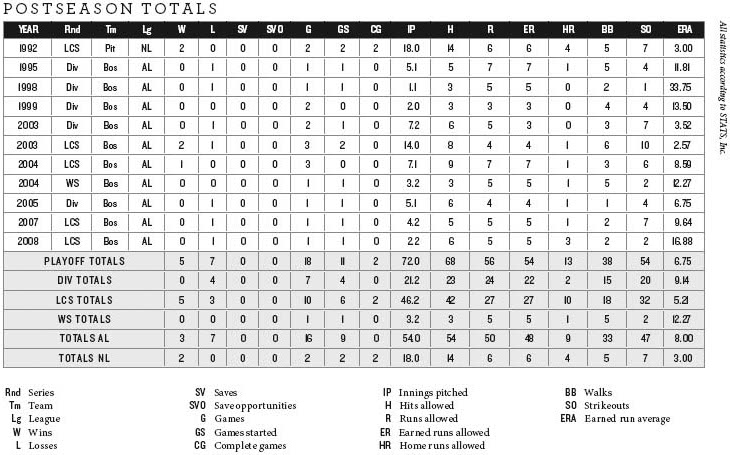Knuckler (40 page)
Authors: Tim Wakefield

"
It is not the critic who counts; not the man who points out how the strong man stumbles, or where the doer of deeds could have done them better. The credit belongs to the man who is actually in the arena, whose face is marred by dust and sweat and blood; who strives valiantly; who errs, who comes short again and again, because there is no effort without error and shortcoming; but who does actually strive to do the deeds; who knows great enthusiasms, the great devotions; who spends himself in a worthy cause; who at the best knows in the end the triumph of high achievement, and who at the worst, if he fails, at least fails while daring
greatly, so that his place shall never be with those cold and timid souls who neither know victory nor defeat.
"
With that in mind, Tim Wakefield's decision became easier.
I'm not a quitter.
Wakefield had decided that he was going to continue wearing a major league uniform until the Red Sox told him he could not. If the Red Sox did not want him, that would be their choice. He wanted to make a final run at Clemens and Cy Young, and a run at 200 victories. Whether he actually attained the record would be largely irrelevant. His legacy had already been forged. But what Wakefield had always done, unfailingly amid the knuckleball's bumps and dives, was put in the effort.
I've been through this many times before.
And so, once more, Tim Wakefield prepared himself to pitch. He positioned the fingernails of his right index and middle fingers into the leather cover of a baseball, into the major league logo just inside the horseshoe, unsure of exactly what the knuckleball might do and uncertain as to where it would take him.
Tim Wakefield was certain of only one thing.
He was still willing, as always, to go along for the ride.
A
PPROPRIATELY, OVER A
period of years and like the knuckleball itself, the plans for this project unexpectedly changed direction on more than one occasion. In the end,
Knuckler
landed safely in the hands of many capable people who were all eager to help harness it, an outcome for which both the author and the writer could not be more grateful.
Any and all credit for this book must begin with Houghton Mifflin Harcourt editor Susan Canavan, who demonstrated extraordinary patience through both a negotiation process and a production process that the author and writer took to the very last pitch, with two outs and the bases loaded in the bottom of the ninth. She embraced this idea from the very beginning and painstakingly pored over a manuscript that was greatly improved through her suggestions and criticisms. Her work was nothing short of brilliant. Rare are those people who make pride the driving force behind their effort, and Susan treated this book as if it were her very ownâwhich, in many ways, it was. We cannot possibly thank her enough for that.
Representatives Kim Zayotti of Blue Sky Entertainment and Scott Waxman of the Waxman Literary Agency demonstrated an especially
high level of tolerance during the negotiations, a process that most everyone generally finds stressful. To their credit, the deal got done, and they, too, should be especially proud of what came of it.
Thanks are also due to Cindy Buck for her excellent copy editing.
The research for
Knuckler
began 15 years ago when the author and writer simultaneously landed at Fenway Park. Neither could have imagined the story and relationships that would develop over the years. During that period of time, the Red Sox rose to prominence as one of the premier franchises in baseball and Fenway Park became one of the more desirable workplaces in the game. The entire Red Sox organizationâfrom ownership to the volunteersâhelped create an environment that fostered growth, success, and passion. Without that, the Red Sox fan base would not be what it is todayâone of the best on the planetâand there would not have been any incentive to tell this story and many, many others.
We can never thank you enough, Red Sox fans, for caring so much.
A cast of people, knowingly or unknowingly, helped fill the inevitable gaps that came up along the way. Over the last two decades or so, baseball coverage in Boston has reached unmatched heights, and the work done by those assigned to the Red Sox by the
Boston Herald
and the
Boston Globe
was an invaluable resource. Those people are too many to name, but anyone who wrote about the Red Sox or Wakefield during that time contributed to this work in some way. Of particular value was a profile done by longtime baseball writer Gordon Edes on Woody Huyke, the man who came up with the idea of turning Tim Wakefield from a fledgling minor league first baseman into a historic knuckleball pitcher. Sportswriters Glenn Miller (of the
Fort Myers Press
) and John Perrotto (of BaseballProspectus.com) helped with those parts of Wakefield's career for which the writer was not present.
Of great value, too, were
The Knucklebook
by Dave Clark and
The Physics of Baseball
by Professor Robert Adair of Yale, works that offer perspective, humor, and insight into the most fascinating pitch in baseball.
The list of those who offered their cooperation in telling Tim Wakefield's story reads like a who's who in baseball over the last sev
eral decades, and we cite them here in no particular order. Les Hall, who coached Wakefield in college, provided invaluable background on Wakefield's career at Florida Tech, from which relatively few official accounts remain. The knuckleballer's parents, Steve and Judy Wakefield, proudly recounted their son's development as an athlete and, just as importantly, as a person. Pittsburgh Pirates director of media relations Jim Trdinich served as a liaison to Chuck Tanner, the longtime skipper who managed knuckleballer Wilbur Wood when both were with the Chicago White Sox. (Tanner later managed the Pirates, but before Wakefield reached the majors.) The esteemed Jim Leyland generously took time from his schedule with the 2010 Detroit Tigers to discuss the early years of Wakefield's career in Pittsburgh. Joe Torre, who is almost certainly headed for the Hall of Fame, similarly took time from his season with the Los Angeles Dodgers to offer his insights on both Wakefield and Phil Niekro, with whom Torre was paired as a catcher for the Atlanta Braves.
And then there was the innovative Jimy Williams, the man who was bold enough to employ Tim Wakefield as a closer during the 1999 season and who always has placed great value on things that others do not. The knuckleball is just one of the many specialties that Williams has championed over the years.
Put those four managers togetherâTanner, Leyland, Torre, and Williamsâand you get 11,781 games of managerial experience. Add in the contributions of longtime baseball evaluator and executive Bill Lajoie, who has spent more than 50 years in professional baseball, as well as affable commissioner Allan "Bud" Selig, and you have roughly 250 years of baseball experience from which to draw.
We cannot thank these men enough for sharing their wisdom on the knuckleball and all things baseball over the years.
Still, because the knuckleball is the ultimate specialty, true experts were required. Both Wilbur Wood and Phil Niekro were remarkably gracious and generous with their time to help this project, each spending long stretches on the phone to share experiences and insights. Only the seasoned knuckleballer truly knows what any other knuckleballer feels. Niekro went above and beyond any reasonable expectation by
agreeing to contribute the foreword for this work, with no compensation, further fortifying the belief that knuckleballers are true team players and among the selfless talents in professional sports. Thank you so much, Phil. You, too,
Wilbah.
We hope this work will call further attention to the many contributions each of you has made to the game.
Wakefield's career with the Red Sox intersected with those of many others, and the list of teammates who contributed to his success is far too long to include here. Nonetheless, for a pitcher who believes in and understands the concept of a team, a formal measure of gratitude must be expressed to all of them. For this project, former Red Sox manager Dan Duquette and current Red Sox general manager Theo Epstein willingly gave their time. Catcher Doug Mirabelli, who caught Wakefield during the prime of the knuckleballer's career with Boston, was as patient and understanding with this process as he was with the knuckler itself. That is no small contribution, and something for which the author and writer are extremely grateful.
And finally, a special thanks from the author and writer to their respective wives and children, who know better than anyone what sacrifices must be made to accommodate anyone who works in or around the world of professional sports.
Tim Wakefield
Autumn 2010
Tony Massarotti
Autumn 2010




Aaron, Hank,
[>]
Adair, Robert,
[>]
All-Star Game (2009),
[>]
â
[>]
Alomar, Roberto,
[>]
Arizona Diamondbacks beginnings,
[>]
A-Rod (Alex Rodriguez),
[>]
,
[>]
,
[>]
,
[>]
,
[>]
Arroyo, Bronson,
[>]
â
[>]
,
[>]
,
[>]
,
[>]
,
[>]
Avery, Steve,
[>]
,
[>]
â
[>]
,
[>]
,
[>]
â
[>]
,
[>]
Aybar, Willy,
[>]
baseball
five tools of positional players,
[>]
baseball work stoppage (1994)
available players and,
[>]
